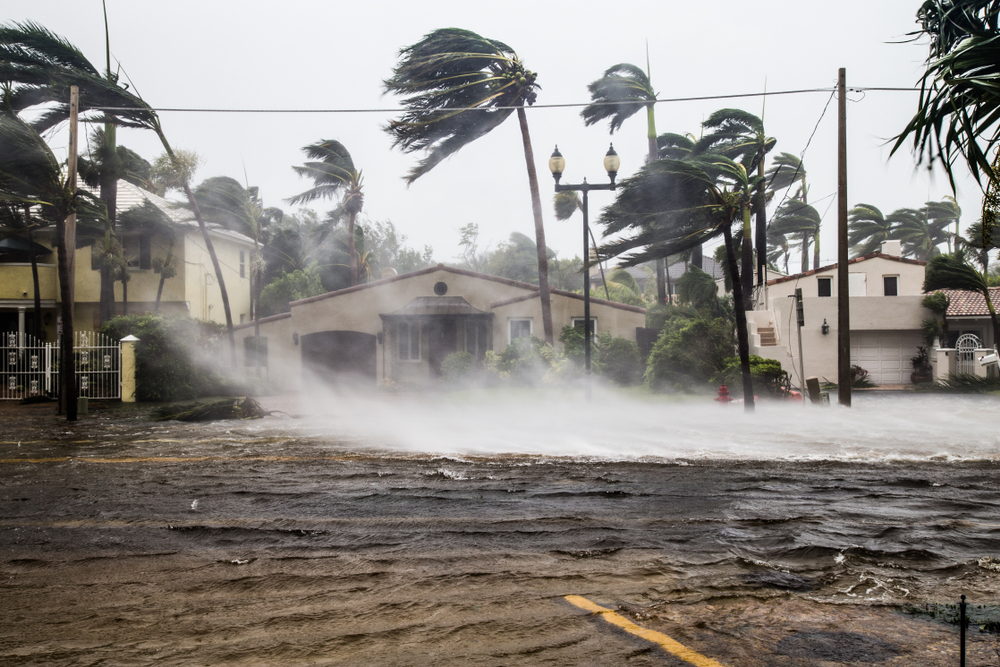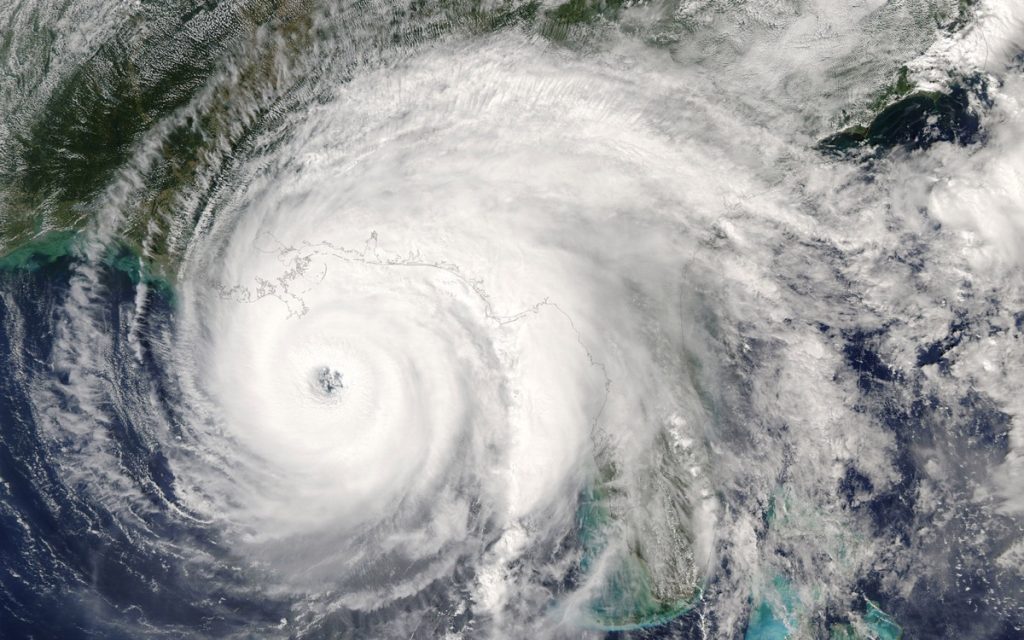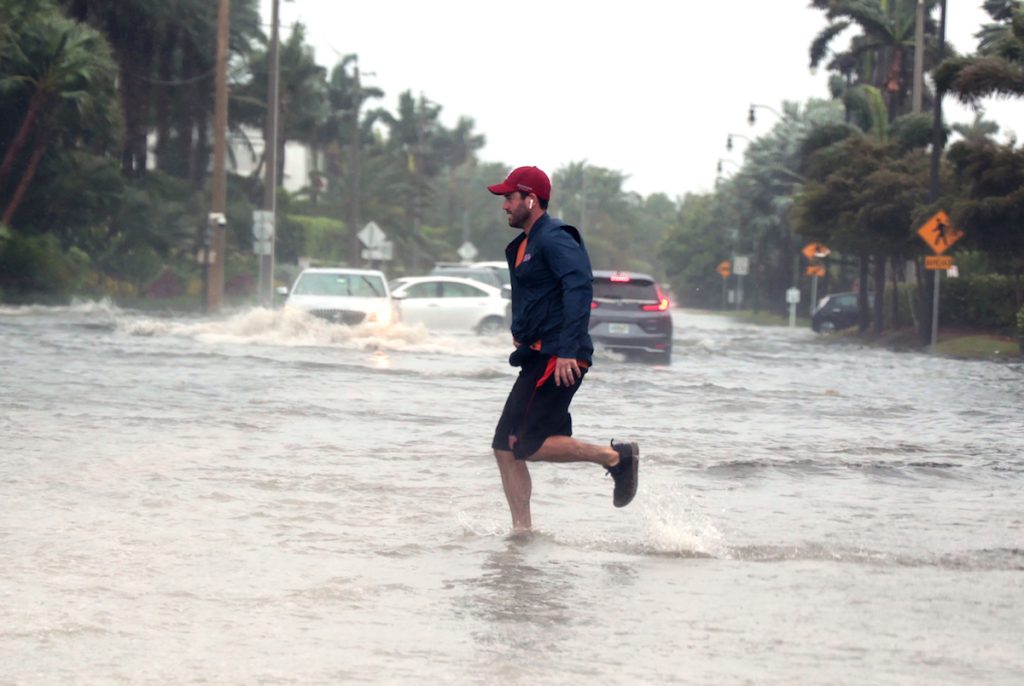Meteorologists Warn That “Super El Niño” Could Lead to Intense Hurricane Season

While the historic atmospheric river rainstorms in California remind us that extreme weather can happen any time of year, hurricane season still usually sticks out as one of the most significant concerns. Scientists can sometimes use certain clues to help determine if a particularly slow or harsh bout of weather conditions is shaping up. And now, meteorologists are warning that a “super El Niño” could lead to an intense upcoming hurricane season. Read on to see what could be in store for this summer and why experts believe it could be a particularly rough year.
RELATED: “Polar Vortex Disruption” Will Send U.S. Temps Plummeting—Here’s When.
El Niño is currently affecting weather patterns in the U.S.

Even those who don’t know much about weather understand that “El Niño” years can bring changes to typical patterns. The term refers to warmer-than-average surface temperatures in the Pacific Ocean that develop roughly every two to seven years, according to the National Oceanic and Atmospheric Administration (NOAA).
During typical periods, El Niño significantly impacts weather in the U.S., including leading to drier and warmer conditions in the northern U.S. and wetter weather to the Southeast and Gulf Coast. It can also have a bit of a protective effect and decrease the number of major hurricanes that develop. But now, changes that could spell more trouble for the upcoming season are underway.
RELATED: “Extended Winter” May Keep Things Cold in These Regions, Meteorologists Predict.
Scientists now forecast that El Niño is winding down and could soon be replaced with another anomaly.

Even though it’s a relatively regular occurrence, there are still a few key differences that set this year’s conditions apart from past years. Meteorologists at NOAA are now saying that this year’s “super El Niño” has led to even warmer temperatures, describing it as “historically strong,” USA Today reports. But they now predict that the warmth in the Pacific may have passed its peak and will begin to diminish while still affecting weather through April.
But while the changes might seem to herald a return to normal, the forecast also points out that there is a “historical tendency for La Niña to follow strong El Niño events.” The term describes the opposite conditions, which involve colder-than-normal ocean surface temperatures in the Pacific. In its initial forecast, the agency cites a 55 percent chance of the cooler version developing sometime between June and August this year.
“It’s not often we have an El Niño advisory and a La Niña watch up at the same time,” Tom Di Liberto, a climate scientist at NOAA, told The Washington Post. However, he added that it’s also “not uncommon” for La Niña to follow up a particularly warm El Niño, citing at least two other back-to-back appearances in the last four decades.
RELATED: “False Spring” Is Heating Up the U.S., But Get Ready for Winter’s Brutal Comeback.
La Niña years tend to see more powerful hurricanes.

Unfortunately, La Niña brings its own set of weather effects with it. Namely, it tends to dry out conditions in the Southwestern U.S. and Southern California while also setting the stage for more frequent and powerful hurricanes to form over the Atlantic Ocean, The Washington Post reports.
According to the National Weather Service (NWS), this is because westerly winds tend to weaken during La Niña, decreasing wind shear that can interrupt brewing storms. This not only increases the number of storms overall but “allows stronger hurricanes to form” as well.
Other experts have pointed to this potentially problematic transition in their forecasts. “A return to La Niña conditions quickly over the summer could result in an active tropical season,” Paul Pastelok, a long-range weather expert for AccuWeather, wrote in a recent prediction.
And it’s not just more intense storms: La Niña still affects standard weather patterns, often bringing an opposite set of conditions than its warm-water counterpart. This means heavier precipitation in the northwest and Northern Plains states, colder weather to the Northeast, and drier, warmer weather to the south, per The Post.
Scientists caution that the conditions may not develop—but there could also be long-term considerations.

In a message posted to X (formerly Twitter) on Feb. 8, Philip Klotzbach, a meteorologist at Colorado State University, pointed out that NOAA’s probabilities for La Niña developing during the peak months of this year’s hurricane season in August through October had risen from 64 percent to 74 percent. However, despite the outlook, he cautioned that it’s still not a foregone conclusion.
“It should be noted that it’s only February, and a lot can change between now and when the Atlantic hurricane season really ramps up (typically in early to mid-August),” Klotzbach posted.
In addition to hurricanes, upcoming weather data this year could also shed light on another long-term problem. Scientists say that because this year’s historically strong El Niño might’ve helped push global temperatures to record highs for eight months in a row, a sustained temperature spike during La Niña could help determine if the planet is experiencing an acceleration in global warming, The Post reports. Scientists also hope to better understand if climate change is also affecting El Niño and La Niña themselves.
RELATED: For more up-to-date information, sign up for our daily newsletter.